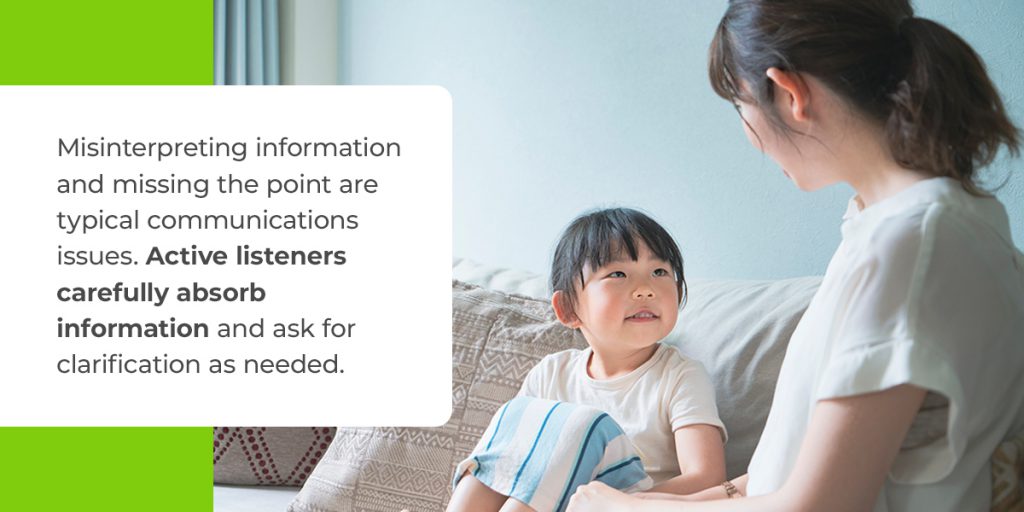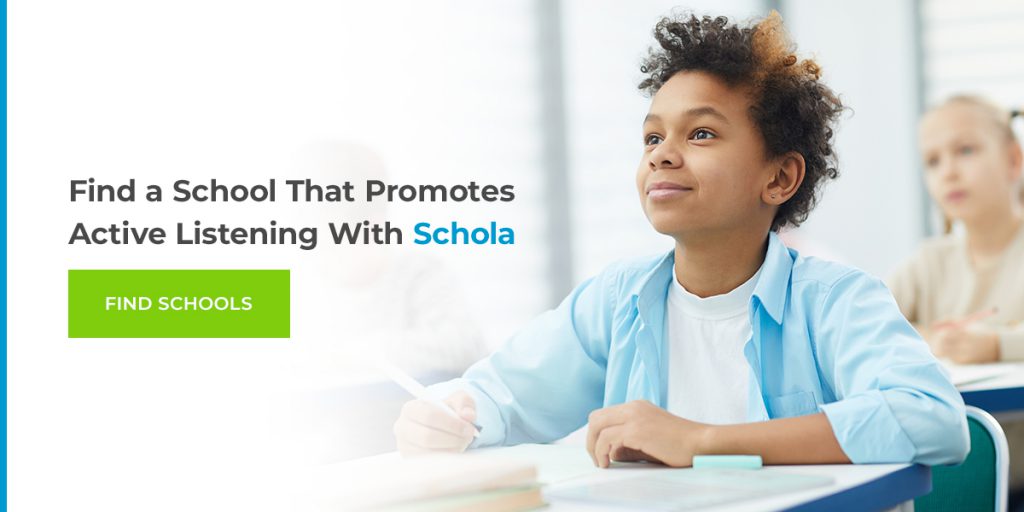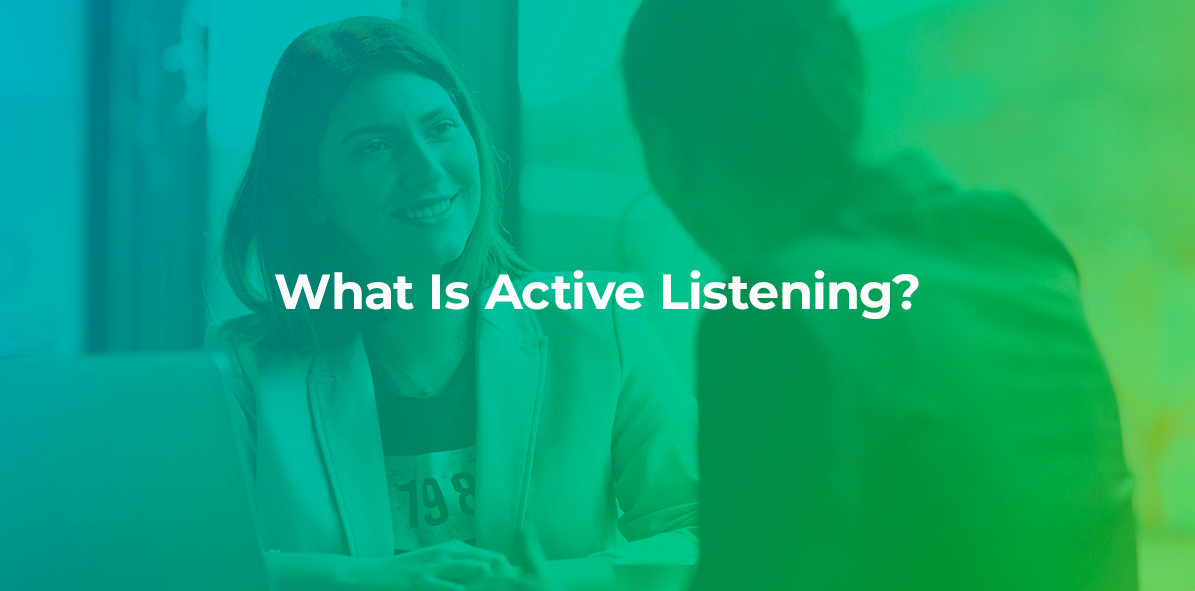Chances are you’ve already heard about “active listening” at work or school because it is a communication skill we can all benefit from! It requires people to consciously hear and retain what another person is saying without getting distracted. Have you ever snoozed off in the middle of a conversation? I know I have! Being an active listener means you’re fully engaging with the person speaking to you, paying close attention to what they’re saying, and absorbing information before responding. Does your child have active listening skills? How can you help them become a better listener? Could you also benefit from active listening?
There are many long and short-term benefits to becoming an active listener for both parents and students. So as the new school year approaches, discover five important ways active listening benefits your child’s wellbeing:
1. Builds Relationships
If you think of conversations you’ve had with good listeners, you probably remember that they made you feel heard and understood. What a great feeling, right? But people aren’t just born with listening skills — they must cultivate and practice them over time.
Teaching your child to be an active listener from an early age will help them build interpersonal relationships and promote good communication habits as they grow older.
2. Stay Productive
When you hear of active listening, you can probably think of several ways it could help your child to be more attentive and productive at school. One of the short-term advantages of practicing active listening for your child is its effect on their academics. Active listening means asking questions, clarifying what others are saying, and understanding what people tell you. These are all excellent qualities of a successful student and future professional!
3. Wake Up Social Butterfly
Active listening will make your child feel more confident in social situations by increasing their awareness of what is happening around them. Your child will be in tune with others, making them more self-assured in every interaction. Active listening helps children gain a more compassionate understanding of other people’s feelings and empowers them to thrive in different social situations.
4. Be a Problem Solver
Are you looking to improve your child’s conflict resolution techniques? By being an active listener, your child will pay close attention to others and consider their feelings more. For example, instead of mentally preparing a response while another person is talking, they will closely listen and interpret their feelings and emotions before answering. When you carefully consider someone else’s viewpoint, you’re putting yourself in their position, making them feel understood which is vital to healthy conflict resolution.
5. Avoid Misunderstandings
Being an active listener will help your child avoid misunderstandings with others. Misinterpreting information and missing the point are typical communication issues among students. Active listeners carefully absorb teachers’ directions and ask for peers’ clarification in academic and social environments. You’ll help your child avoid misunderstandings and strengthen their communication skills by teaching and leading by example while practicing their listening skills at home.

Key Tactics To Help Your Child Practice Active Listening at Home
Becoming an active listener doesn’t happen overnight! Instead, consider these easy and fun ways to help your child develop their listening skills at home.
- Eye Contact: Start by emphasizing the value of eye contact to show others they’re fully engaged and paying close attention. When talking to your child, you should strive to make eye contact 60% to 70% of the time and encourage them to do the same.
- Paraphrasing: Have short conversations and interactions with your child at home, then ask them to summarize what you said. You can ask questions like “What was I saying? I forgot.” Paraphrasing the other person’s thoughts and feelings will help them learn to clarify information and avoid confusion.
- Avoid Interruptions: A crucial characteristic of an active listener is not interrupting others. As you practice active listening with your child at home, be sure they understand that interrupting others is not only disrespectful but also an obvious sign that they aren’t listening or following a conversation closely. A great opportunity to highlight the importance of active listening is by interrupting your child in fun ways during a conversation.
- Nonverbal Behavior: Did you know that nonverbal cues are a vital trait of effective communicators? Making eye contact and not allowing your attention to stray from the conversation is essential to communicating well with others. As your child practices active listening, show them examples of everyday nonverbal cues so they can identify them even when you are not around.
- Ask Questions: Practice active listening with your child at home by having them listen to you and follow up by asking questions. Clarifying what others have said will help children become better students and learn more effectively as they use their active listening skills in the classroom and beyond.

Find a School That Promotes Active Listening With Schola
With ScholaMatch™, you can find schools that promote active listening and value effective communication as much as you do! Find the best school to meet your child’s needs in minutes with Schola. We’ll ask about their age, interests, and any particular communication needs to help them grow and develop into effective listeners and communicators. Start your school search with Schola today!

